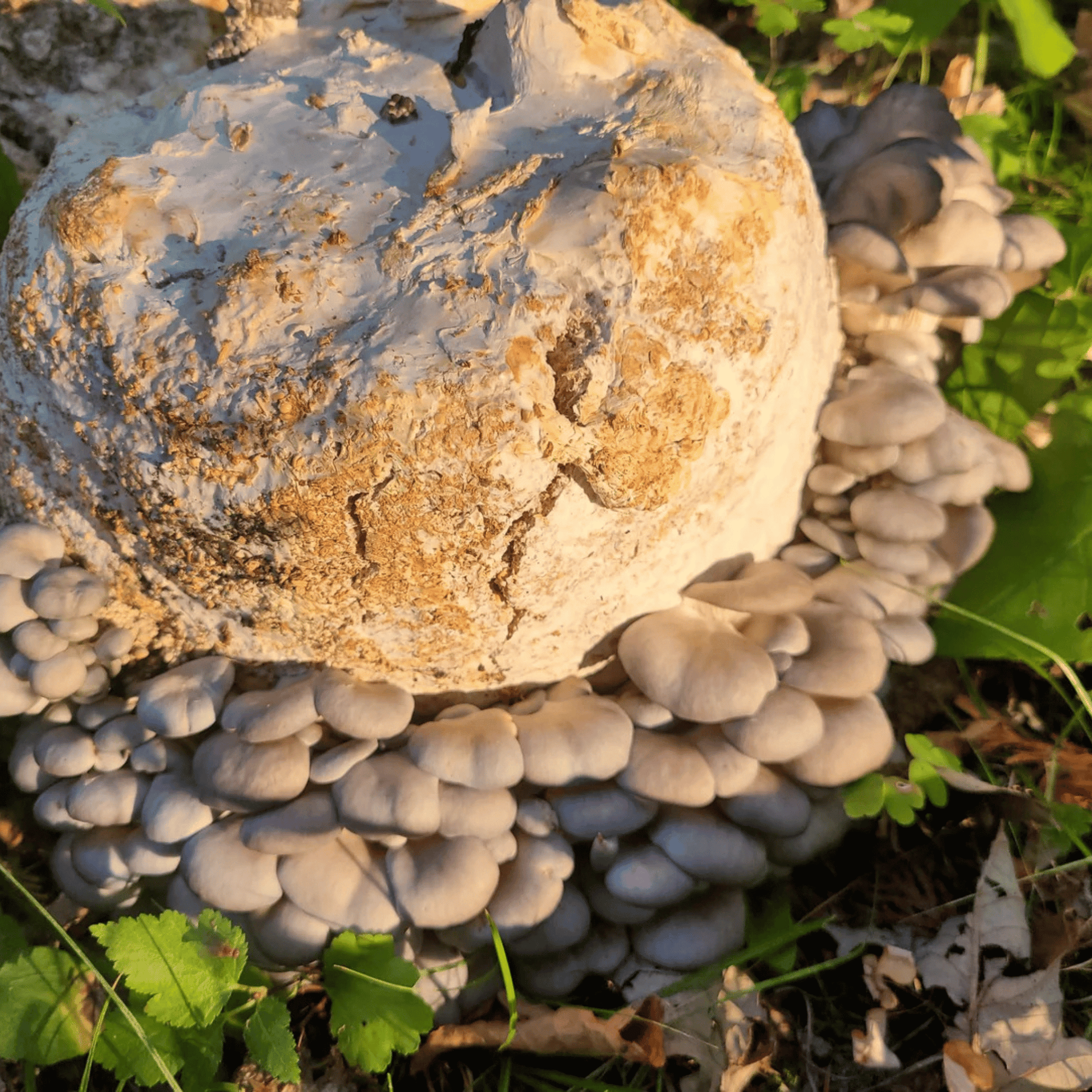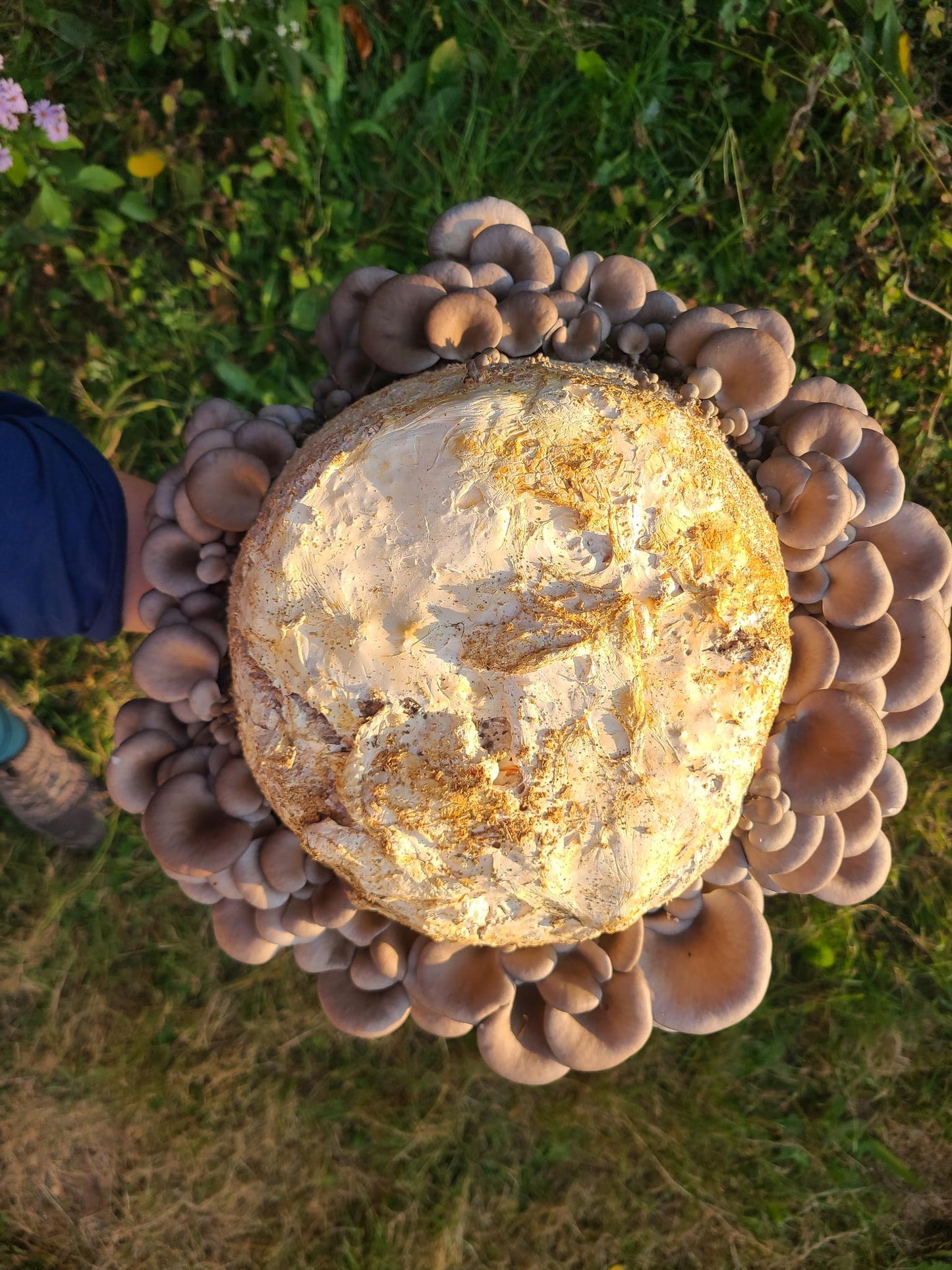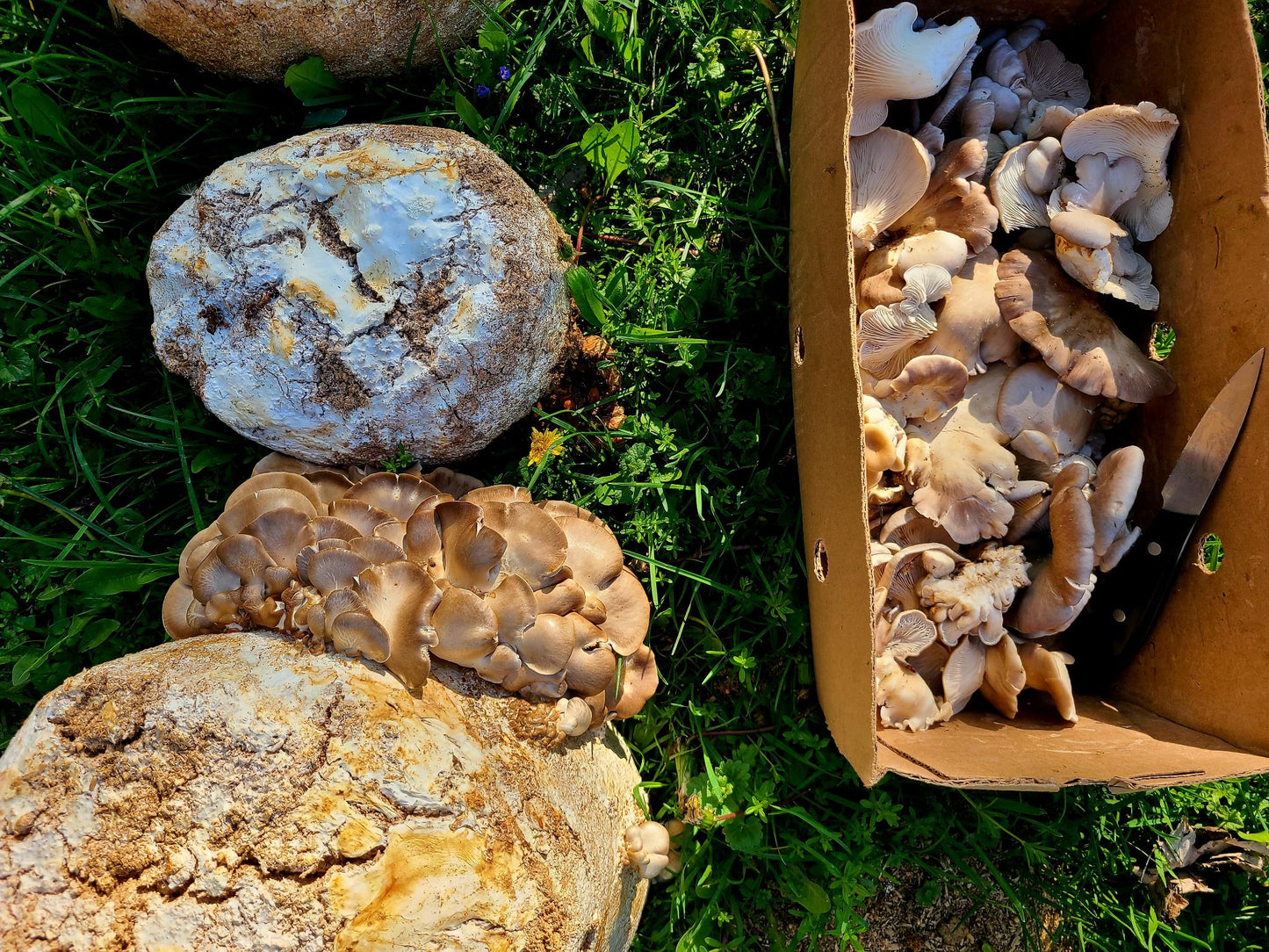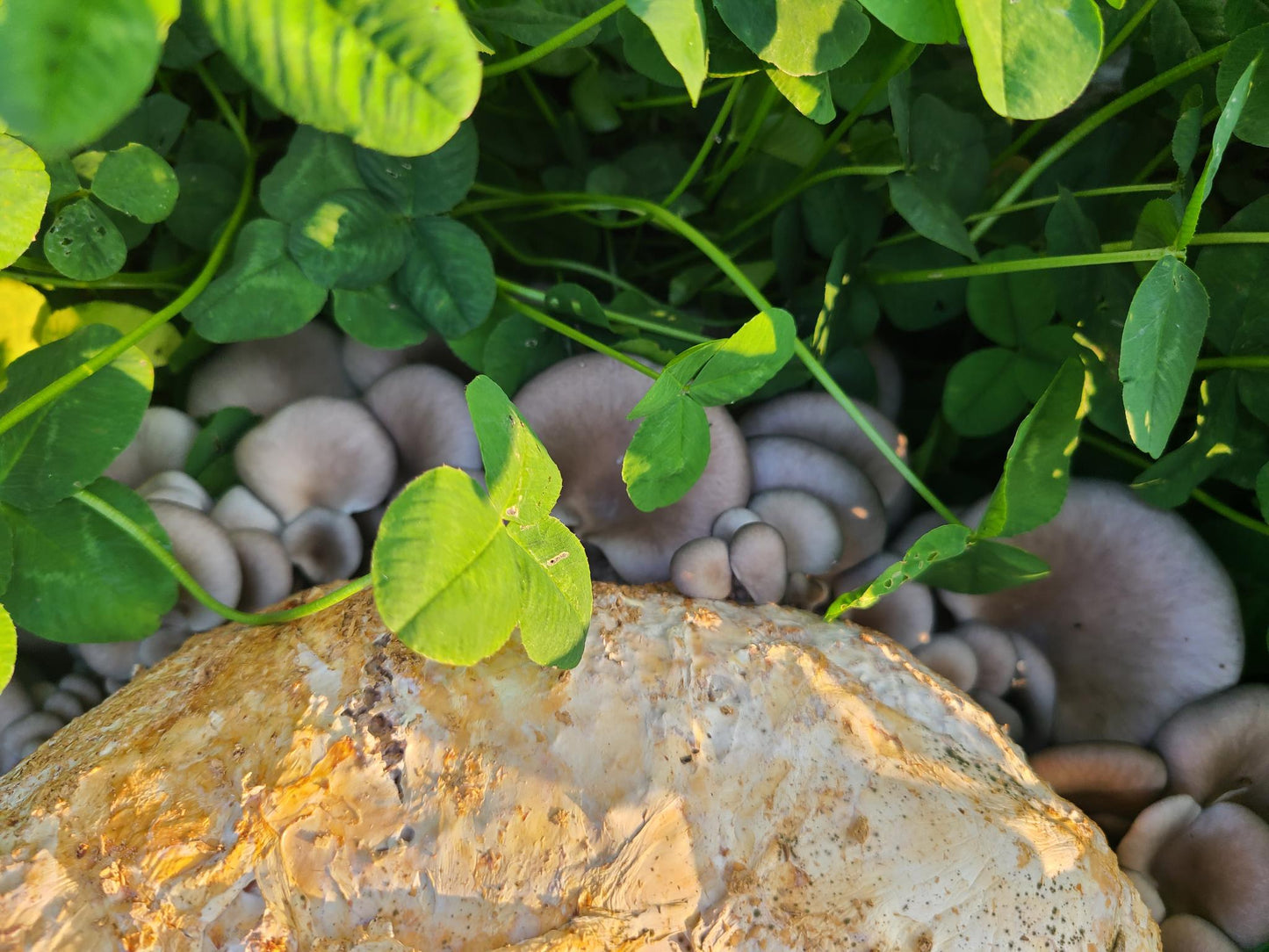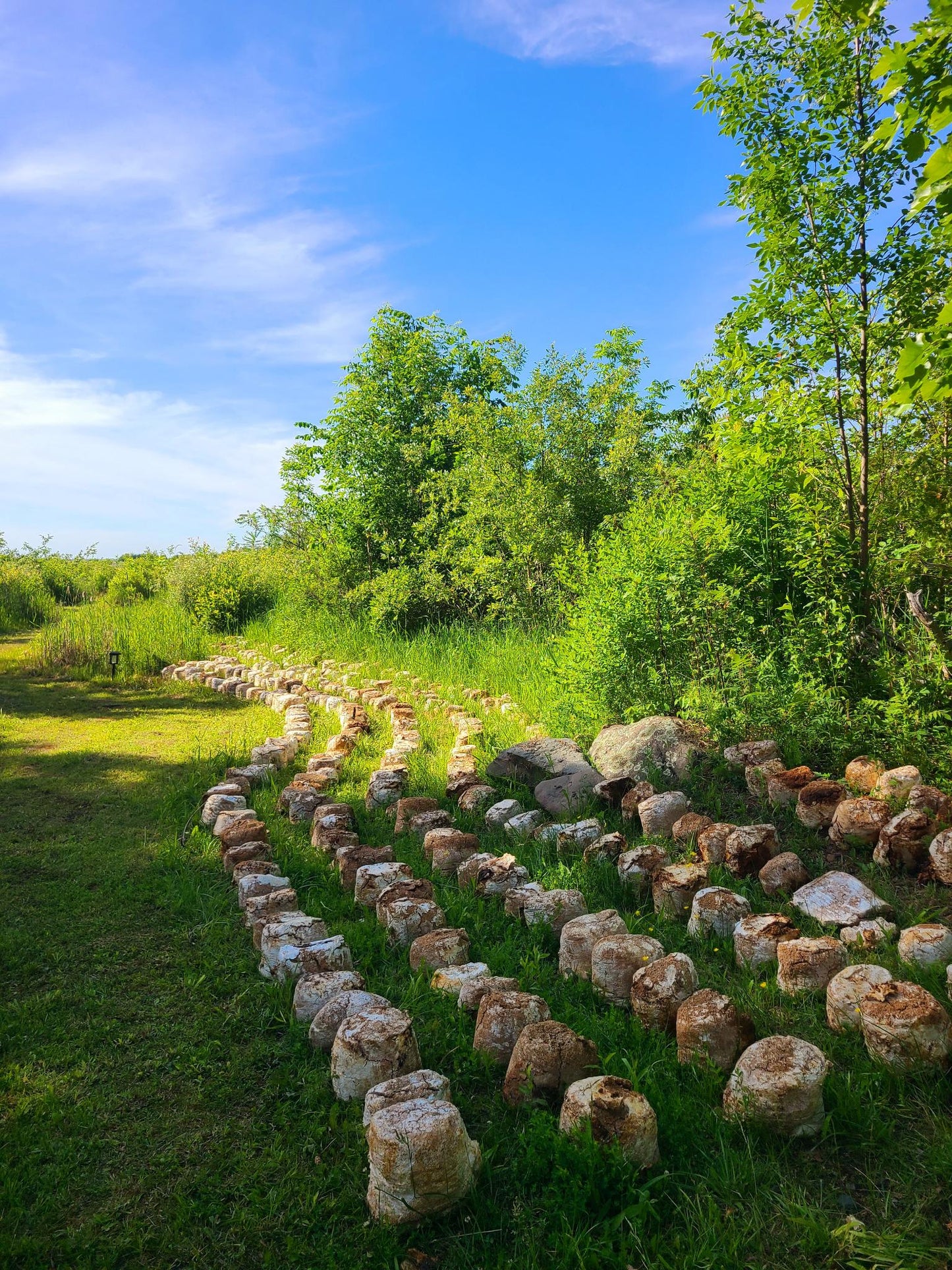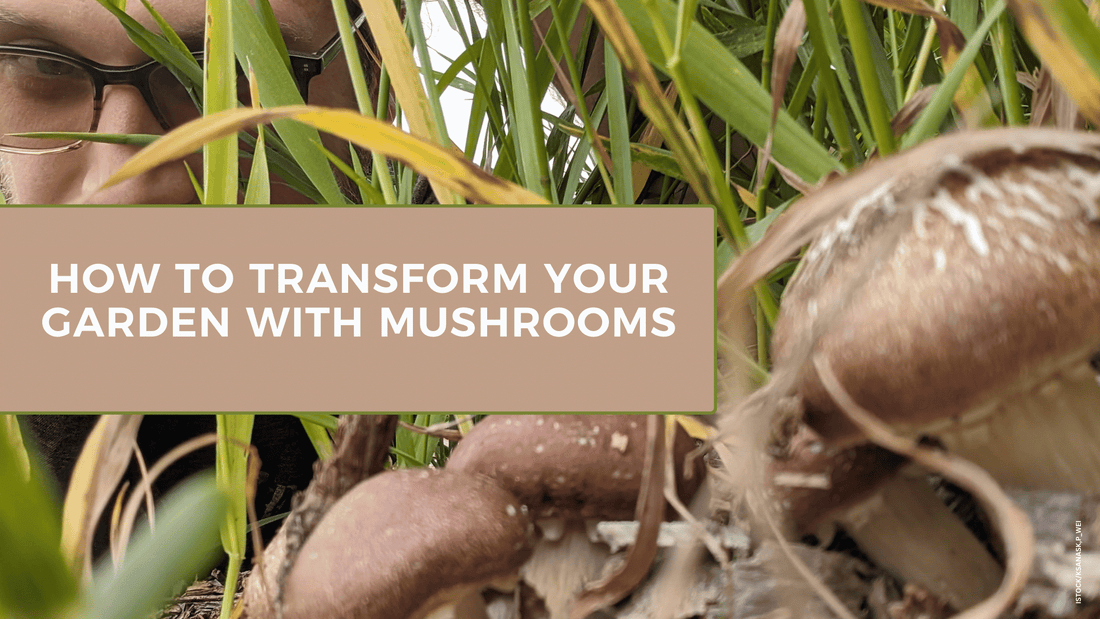
How to Transform Your Garden With Mushrooms
Share
The lazy heat gave way to a calming cool as the late-August sun dipped behind the tree line. My eyes adjusted and I looked around me. The fields around our mushroom shop were brown and crispy, dried from a season under the sun and little rain.
Taking in one last breath, I walked back inside to finish my work for the day. But on my way back, stopped to check out my verdant, thriving mushroom garden.
Now, it's not quite a garden in the sense you might be thinking. As a commercial mushroom grower, we make a lot of compost. These are the woody substrate blocks we used to grow the mushrooms on. Once we harvest, we move these blocks outside into small piles, rows and beds.
We don't water them.
We don't tend to them.
The result? A small patch turned into a green oasis, teeming with life.
What happens is this:
- The blocks are still full of living mycelium
- This mycelium grows more mushrooms
- The mushrooms, mycelium and spores attract beneficial wildlife
- The organic matter add carbon to the soil and helps retain water through periods of drought.
Deer showed up, leaving nutrient-rich droppings. Bugs and birds flocked in, bringing seeds and boosting the soil’s microbiome.
When I dig into soil with aged mushroom, I find handfuls of earthworms doing their stuff. Lush, green, and full of life, it was like night and day, showing how powerful organic material and mycelium can be.
Grow Mushrooms, Boost Soil
You can use them to grow tasty mushrooms first, then crumble them into your soil to make it rich and healthy. It’s a two-for-one deal that helps your plants thrive and keeps your garden buzzing with life.
Here’s the one thing you need to know: garden booster blocks grow mushrooms and supercharge your soil. They’re not only compost. they’re packed with mycelium that feeds your garden long-term, unlike quick-fix fertilizers. And they’re so easy to use.
Your Simple 3-Step Plan
-
OPTION 1: Set Up the Block: Place your booster block in a shady spot. You can water it daily to keep it moist, or let it get rained on. If it dry that's ok, the mycelium will wake up and fruit when it gets wet.
OPTION 2: Bury the Block: You can also dig a small hole in your garden and bury the block up to the top. Cover it with a very thin layer of mulch.
-
Harvest Mushrooms: In a few 1-3 weeks, pick your mushrooms. Dinner’s on you!
- Boost Your Soil: Crumble the spent block over 5-10 square feet of soil and mix it in. Watch your plants go wild.
Community Success Story
Last year, we received an unexpected community donation of $500. From that, we gave out hundreds of these blocks around Manitoulin Island, Ontario. People saw incredible plant growth in all kinds of soil.
We saw new gardens thrive in sandy soil. We saw heavy clay soils amended and be more welcoming to more plants. We saw side-by-side tests of gardens with and without the blocks.
On top of that, I could not tell you how many pounds of fresh, delicious mushrooms grew from those blocks.
That's a big win for local food.
Get Involved!
If you’re nearby, grab some blocks at our shop—bring your own totes, and we’ll load up your car or trailer.
Not local? Donate to our giveaway program to help more gardens thrive.
Either way, you’re building healthier soil and growing your own food.
Let’s make our gardens—and our planet—a little greener, one booster block at a time.
Happy gardening,
Shane O'Donnell
PS. Grow Kits turn into Garden Booster Blocks once you've harvested ;)

